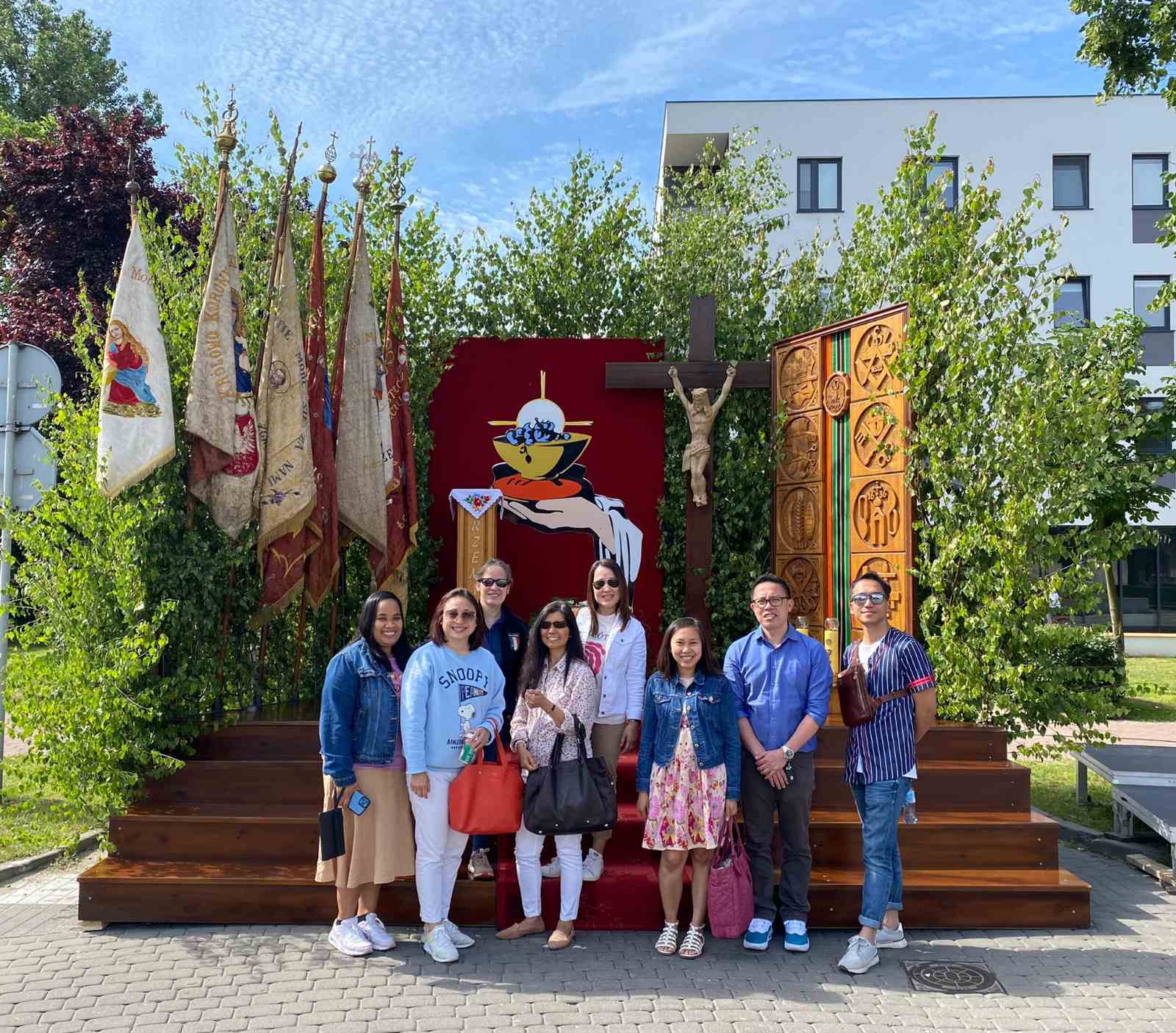Corpus Christi or Boże Ciało is a national holiday in Poland celebrated last June 16 this year. This liturgical feast is observed by the Catholic Church as a joyful celebration of the abiding presence of Jesus in the Blessed Sacrament.
It is usually marked with processions of the Blessed Sacrament throughout select places in the Catholic world.
As a preliminary trial for a future pilgrimage plan, select members of the Filipino community together with Father Ronnie of the Anthonian Institute travelled to Łowicz to witness their renowned Corpus Christi procession, which is known for their flower carpets tradition allowing it to be inscribed on the List of Intangible Cultural Heritage kept by the National Heritage Institute.
The journey started when the group met around 8 am at the Anthonian Institute located at Stroma 30, Warsaw. With two vehicles on convoy, the group travelled for approximately 1 hour to reach Bazylika katedralna pw. Wniebowzięcia Najświętszej Maryi Panny i św. Mikołaja
(Cathedral Basilica of Assumption of the Blessed Virgin Mary and St. Nicholas) in Łowicz, where the group attended a very solemn mass celebration along with hundreds of other locals and devotees. This devotion to the Blessed Sacrament streams from the heart of the Holy Mass and the Holy Communion in which we partake in receiving Christ through the Eucharist.
It is a reminder that during His last supper, He took bread and wine, blessed and broken, and then gave Himself to his disciples through these Sacramental signs: “My Body, My Blood, I am giving for you”.
The celebration of the mass was then brought into the streets when the procession started to go around the Old Town passing through four altars set up especially for the occasion. In each altar or station, specific prayer intentions and passages were shared in Polish and then in other various languages (English, Spanish, Italian and Latin). It then returned to the main square in front of the cathedral for a solemn sacral blessing. During the procession, the monstrance is carried under a special canopy, assisted by men and women wearing colourful traditional outfits from Łowicz. Whole families participate in the processions, including children, who often spread flower petals along the procession.
Moreover, the group experienced an opportunity to discover folk art from across the region. Market stalls set up by local artisans on this day feature not only folk costumes, but also the famous paper cut-outs from Łowicz: square-shaped designs depicting games called kodry, and gwiozdy, which are works with plant and bird patterns. Pottery, woodwork and other food products were also on sale. After enjoying the festivities and a sumptuous, packed lunch, the group left to go back to Warsaw with hearts and minds full of memories and insights.
This preliminary pilgrimage reminded us that in that sacred moment of giving, Jesus showed
the greatest action of all – the offering of Himself on the Cross. We believe and repeat that same action in sacred obedience to His command each time the Church, gathered around the altar, remembers, and puts back together again the broken Body of Christ. Also, it is the prayer of Jesus Christ Himself into which we are drawn that offers true worship to God. This lies at the heart of the transformation of the bread and wine into the Body and Blood of our Lord.

